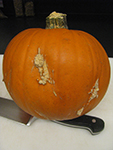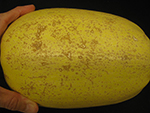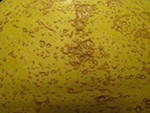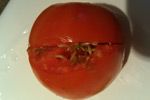Photo Gallery of Vegetable Problems
Diseases, pests, and other problems common to many vegetables
Diseases |
||
Nematodes |
||
Insect/Mite Pests |
||
Weeds |
||
Herbicide Injury |
||
Abiotic Problems Common to Vegetables |
||
In addiditon to the resources found here, the WSU Urban IPM Program’s Hortsense and Pestsense websites are designed for homeowner education and are used by County Extension Educators, Master Gardener Coordinators, Master Gardeners and Clinic Diagnosticians. Together, the two websites contain 1,050 fact sheets which provide up-to-date, research-based information on problem insects, diseases, and weeds and their management. The websites have been upgraded and the new versions are now available online. Additional features include a Hortsense image library and search, print and email options.
(Click on photo to enlarge)
Diseases
Disease: Clubroot of brassica vegetables
Pathogen: Plasmodiophora brassicae
Host crops: Broccoli, cabbage, cauliflower, brassicaceae (cruciferous) weeds, and radish.
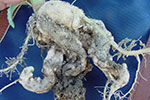 |
| Below-ground symptoms of clubroot. |
| Photo Source: Lindsey du Toit |
On-Line Resources:
Clubroot of Crucifers. Vegetable MD Online.
Clubroot. Wikipedia.
Clubroot of vegetable brassicas – towards integrated control. New Zealand Institute for Crop & Food Research Ltd.
Clubroot of Crucifers. The Ohio State University Extension.
Managing Clubroot: Equipment Sanitation Guide. Canola Council of Canada
Top 10 tips from the 2013 International Clubroot Workshop. Canola Watch, Canola Council of Canada.
Disease: Damping-off/Seedling blight
Pathogen: Aphanomyces, Fusarium, Pythium, and Rhizoctonia species.
Host crops: Most vegetables are susceptible to damping-off/seedling blight including watermelon.
On-Line Resources:
Pacific Northwest Plant Disease Management Handbook: Damping-off in Vegetable Seedlings
Pacific Northwest Plant Disease Management Handbook: Corn (Zea mays) – Seed Rot and Seedling Blight
Pacific Northwest Plant Disease Management Handbook: Watermelon (Citrullus lanatus) – Damping-off
Common Diseases: Damping-off. Washington State University Hortsense.
Disease: Verticillium wilt
Pathogen: Verticillium species, including V. albo-atrum, V. dahliae and V. longisporum, depending on the vegetable crop.
Host crops: Numerous vegetables including many brassica vegetables (but not broccoli), cucumber, eggplant, pepper, potato, pumpkin, radish, spinach, tomato, watermelon, etc.
On-Line Resources:
Common Diseases: Verticillium wilt. Washington State University Hortsense.
Cucumber, Pumpkin, Squash: Verticillium wilt, Washington State University Hortsense
Verticillium Wilt in Spinach Seed Production
Pacific Northwest Plant Disease Management Handbook: Spinach (Spinacia oleracea) – Verticillium Wilt
Crop Profile for Spinach Seed in Washington
Potato: Verticillium wilt (Potato early dying), Washington State University Hortsense
Tomato: Verticillium wilt, Washington State University Hortsense
Disease: White mold
Pathogen: Sclerotinia sclerotiorum
Host crops: Bean, various brassica vegetables, carrot, eggplant, lettuce, potato, tomato, etc.
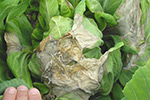 |
| White mold symptoms on a cabbage head. |
| Photo Source: Lindsey du Toit |
On-Line Resources:
Bean: White mold (Sclerotinia rot). Washington State University Hortsense
Pacific Northwest Plant Disease Management Handbook: Carrot (Daucus carota) Cottony Rot
Carrot: Cottony Rot (White Mold). Howard F. Schwartz and David H. Gent, Colorado State University
UC Pest Management Guidelines: Lettuce: Lettuce Drop. UC IPM Online. University of California.
Diseases of lettuce ( Lactuca sativa ) in Arizona: Leaf drop. Extension Plant Pathology, The University of Arizona.
Evaluation of Products to Manage Sclerotinia Leaf Drop of Lettuce in 2003. The University of Arizona Cooperative Extension.
Pacific Northwest Plant Disease Management Handbook: Pepper (Capsicum sp.) – White Mold
Pacific Northwest Plant Disease Management Handbook: Tomato (Lycopersicon esculentum) – White Mold
Nematodes
Disease: Root knot
Pathogen: Meloidogyne species
Host crops: Numerous plant species including many vegetables such as carrot, coriander, onion, potato, etc.
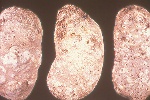 |
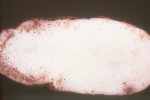 |
| Symptoms of root knot on potato tubers | |
| Photo Source: G.Q. Pelter | |
On-Line Resources:
Pacific Northwest Plant Disease Management Handbook: Carrot (Daucus carota) – Nematode, Root-knot
Carrot: Root-knot nematode, Washington State University Hortsense
Pacific Northwest Plant Disease Management Handbook: Nematodes
Major Emerging Problems with Minor Meloidogyne Species. By Axel A. Elling, Washington State University.
Onion and Garlic: Nematodes, UC IPM Online, University of California
Root-knot nematode. APSnet
Insect/Mite Pests
Common names: Numerous aphids can infest vegetable crops, e.g., bean aphid, green peach aphid, melon aphid, and potato aphid.
Latin binomial: Numerous types of aphids including Aphis fabae (bean aphid), Myzus persicae (green peach aphid), Aphis gossypii (melon aphid), and Acrosiphum euphorbiae (potato aphid)
Host crops: In addition to cucumber, corn seed, melon, potato, tomato, eggplant and pepper, aphids can feed on many other vegetables including broccoli, cabbage, spinach, Swiss chard, squash, pumpkin, beet as well as many weed species including Brassicaceae (cruciferous) weeds.
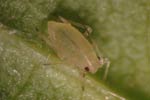 |
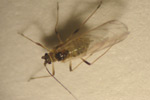 |
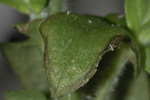 |
| Green peach aphid may be found along the midrib on the underside of leaves of a host plant. Mature aphids are about 2 mm long (ca. 1/16 inch), egg-shaped, and the color of the wingless nymphs and adults ranges from pinkish yellow to yellowish green. There are usually multiple individuals in a single colony. | The green peach aphid tends to overwinter in stone fruit trees. By late May to early June, individual aphids in a colony develop wings and fly to vegetable crops and a wide range of weeds. As the aphids disperse (June to August), they can transmit important viruses including potato leaf roll virus and potato virus Y. | The easiest way to scout for aphid colonies is to search perimeter vegetable plants for copious amounts of sticky, glistening honeydew coating the upper surfaces of lower leaves of plants. Honeydew may contain numerous cast (shed) skins (white to gray) and a black sooty mold (fungus) that colonizes aphid honeydew. |
| Photo Source: Michael Bush, WSU Extension, Yakima, WA | ||
On-Line Resources:
Biology and Management of Aphids in Organic Cucurbit Production Systems, Washington State University Extension and the Cooperative Extension System.
Pacific Northwest Insect Management Handbook: Vegetable crop pests-Aphid
Pacific Northwest Insect Management Handbook: Potato, Irish – Aphid
Pacific Northwest Insect Management Handbook: Pumpkin and squash – Aphid.
Common Insect & Mite: Aphids, Washington State University Hortsense.
Common name: Blister beetle
Latin binomial: Epicauta spp. including E. maculata
Host Crops: Blister beetles are typically considered beneficial insects as the larvae feed on grasshopper eggs, but they are occasional pests on crops such as alfalfa, beets, beans, clover, potatoes, other vegetable and field crops, and native plants.
On-Line Resources:
Blister Beetles: Pest or Beneficial Predator?, Washington State University Extension Fact Sheet FS113E.
Blister Beetles: Coleptera: Meloidae Epicauta maculata, E. fabricii, E. puncticollis, Lytta nutalli. Modified from G. Bishop, et al. 1982. Management of Potato Insects in the Western States, Integrated Plant Protection Center of Oregon State University.
Blister Beetles, Identification & Management of Emerging Vegetable Problems in the Pacific Northwest. Pacific Northwest Vegetable Extension Group.
Pacific Northwest Insect Management Handbook. Chapter: Vegetables, Section: Table Beets (aphid to cucumber beetle)
Common name: Broad mites are tiny (0.2
mm-long adult females), oval, light yellow to amber or white or even green
arachnids (so they have eight legs). Male adults are smaller. There are four
life stages: egg, larva, nymph and adult. Eggs are colorless, translucent,
elliptical, about 0.08 mm long, and covered with white tufts on the upper
surface. Young broad mites have only three pairs of legs, are slow moving, and
whitish in color. The quiescent stage is an immobile, engorged larva. Injury to
broad mites can be difficult to diagnose because of how small the pests are and
the locations where they feed on plants. Broad mites typically feed within
growing meristems and require magnification to be seen.
Latin binomial: Polyphagotarsonemus latus (Arachnida:
Acari: Tarsonemidae)
Host crops: Broad mites have a wide host range in tropical
areas and commonly infect plants in greenhouses in temperate and subtropical
areas. Hosts include many perennial and annual plant species, including
ornamentals, citrus, grape, and vegetables such as bean, cucurbits, eggplant,
tomato, pepper, potato, etc. Adults feed on the lower surface of leaves and on
fruit.
| Damage to pepper plants by broad mites. | ||
| Photo Source: Lou Almasi | ||
Online Resources:
Broad Mites in Fruiting Vegetables, Penn State Extension, Plants and Pests, Vegetable, Small Fruit, and Mushroom Production News.
Broad Mite, Featured Creatures, Entomology & Nematology, FDACS/DPI, EDIS, University of Florida.
Broad mite is becoming an increasing problem, Dan Gilrein, Greenhouse Management Magazine.
Broad Mite, Entomology: Insects Associated With Vegetable Crops in Georgia: Solanaceous Crops, University of Georgia College of Agricultural and Environmental Sciences.
Broad mite: Not your typical Michigan mite, Michigan State University
Extension News.
Common name: Brown marmorated stink bug (BMSB)
Latin binomial: Halyomorpha halys
Host crops: Very wide host range including Oregon berry, grape, tree fruits, hazelnuts, vegetables including pepper, corn, tomato, ornamentals, etc.
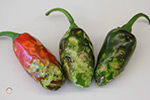 |
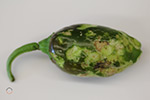 |
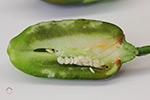 |
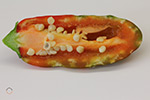 |
| Photo Source: Nik Wimann, Oregon State University | |||
On-Line Resources:
Brown Marmorated Stink Bug, Identification & Management of Emerging Vegetable Problems in the Pacific Northwest, Pacific Northwest Vegetable Extension Group.
Brown Marmorated Stink Bug in Oregon, Oregon State University
Brown Marmorated Stink Bug News. Information and updates for Oregon. Volume 1, Spring 2013. Oregon State University.
El Chinche Apestozo Marrón Marmolado en Vegetales (BMSB: Brown Marmorated Stink Bug) - Resumen de las recomendaciones para su control. Los autores son miembros del BMSB SCRI CAP (siglas en ingles): Equipo de Cultivo de Vegetales.
Integrated Pest Management for Brown Marmorated Stink Bug in Vegetables - A synopsis of what researchers have learned so far and management recommendations using an integrated approach. Authored by the BMSB SCRI CAP Vegetable Commodity Team.
Pest Alert: Brown Marmorated Stink Bug, A quick ID guide from the Oregon Department of Agriculture
Pest Watch: brown Marmorated Stink Bug, Washington State University Extension Fact Sheet FS0079E
Common name: Flea beetle
Latin binomial: Pictured is the western potato flea beetle, Epitrix subcrinita, but the tuber flea beetle, Epitrix tuberis, may also damage foliage.
Host crops: Eggplant, pepper, potato, and tomato.
On-Line Resources:
Potato Flea Beetles: Biology and Control (PDF), Washington State University Extension Bulletin 1198E.
Pacific Northwest Insect Management Handbook. Chapter: Irish Potatoes, Section: Flea Beetle to Grasshopper.
Vegetables: Potato: Potato flea beetles. Washington State University Hortsense.
Common name: Lygus bugs
Latin binomial: Lygus spp.
Host crops: Numerous different species of vegetables and other crops, e.g., alfalfa, beet, cabbage,
carrot, potato, spinach, Swiss chard, etc. Lygus bugs can cause different types of damage to various growth stages of different crops. They cause blackheart on celery, blasting on flower tissues, collapse of asparagus spears, decreased yields in carrot, beet, spinach, and other seed crops, etc.
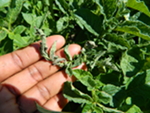 |
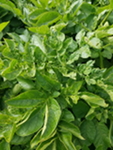 |
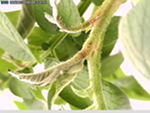 |
| Symptoms of feeding injury from lygus bugs on potato plants. | ||
| Photo Source: Oregon State University HAREC Irrigated Agricultural Entomology Program (Silvia Rondon) | ||
On-Line Resources:
Pacific Northwest Insect Management Handbook: Carrot seed – Lygus bug
Lygus bugs on potatoes in the Pacific Northwest. Josephine Antwi, Silvia I. Rondon, and Rodney Cooper, Oregon State University Extension Service Bulletin EM9173, 2017.
Lygus
Control in Potato, 2016. Silvia I. Rondon and Daniel I. Thompson,
Arthropod Management Tests, 2017, 1–2, Oxford University Press, 2017.
Disease: Seedcorn maggot
Pathogen: Delia platura
Host Crops: Many vegetable crops including snap, kidney, and lima beans, onion, corn, turnip, pea, cabbage, and cucurbits. They cause the most damage in spring to newly emerging seedlings.
On-Line Resources:
Pacific Northwest Insect Management Handbook: Vegetable crop pests – Seedcorn maggot
Seed Corn Maggot. VegEdge, University of Minnesota
Seed Corn Maggot. UMass Amherst
Common name: Spider mites
Latin binomial: Tetranychus spp. including twospotted spider mite (Tetranychus urticae), strawberry spider mite (Tetranychus turkestani), and Pacific spider mite (Tetranychus pacificus)
Host crops: Wide host range, including many vegetables such as bean, carrot seed crops, potato, etc.
On-Line Resources:
Some Common Plant-Feeding Mites and Plant-Inhabiting Mite Predators in the Northwestern United States. PNW Insect Management Handbook.
Lima Bean – Spider Mites. PNW Insect Management Handbook.
Carrot seed – Twospotted spider mite. PNW Insect Management Handbook, Chapter: Vegetable Seed, Section: Carrot Seed.
Managing spider mites in gardens and landscapes. University of California Online Statewide Integrated Pest Management Program.
Common Name: Squash bug
Latin binomial: Anasa tristis
Host crops: Cucurbit vegetables (e.g. pumpkin and squash).
On-Line Resources:
Pacific Northwest Insect Management Handbook. Chapter: Vegetables, Section: Pumpkin and Squash, pt.2.
Vegetables: Cucumber, Pumpkin, Squash: Squash bug. Washington State University Hortsense.
Common name (of damaging stage): Western flower thrips
Latin binomial: Frankliniella occidentalis
Host crops: Host crops: Basil, Broccoli, Cabbage, Cauliflower, Cucumber, Onion, Potato, Pumpkin, Squash, Tomato, and Watermelon.
On-Line Resources:
Western Flower Thrips Thysanoptera: Thripidae Frankiniella occidentalis.
Pacific Northwest Insect Management Handbook. Chapter: Vegetables, Section: Broccoli, Cabbage, Other Crucifers.
Pacific Northwest Insect Management Handbook. Chapter: Vegetables, Section: Cucumber (garden symphylan to wireworm).
Vegetables: Bean: Thrips. Washington State University Hortsense.
Vegetables: Broccoli, Cole crops: Thrips. Washington State University Hortsense.
Common name: Whitefly
Latin binomial: Pictured in these photos is the greenhouse whitefly (Trialeurodes vaporariorum), but there are multiple species of whitefly that can plague vegetable crops.
Host crops: Eggplant, pepper, potato, tomato, and other crops. Whiteflies are more frequently a problem in greenhouse (transplants) than in field situations in the Pacific Northwest region of the USA.
On-Line Resources:
Greenhouse Whitefly: Biology and Control. Extension Bulletin 1349, Washington State University.
Pacific Northwest Insect Management Handbook. Chapter Irish Potatoes, Section: Tuberworm to Wireworm.
Common name (of damaging stage): Wireworm (adults are called click beetles or snapping beetles)
Latin binomial: Ctenicera spp. and Limonius spp. Several kinds of wireworms are in the Pacific Northwest. Wireworms causing the most damage in irrigated areas are the Pacific Coast wireworm (Limonius canus), the sugar beet wireworm (L. californicus), the western field wireworm (L. infuscatus), and the Columbia Basin wireworm (L. subauratus). The Pacific Coast and sugar beet wireworms are the most common. Where annual rainfall is <15 inches, the Great Basin wireworm (Ctenicera pruinina) may be a problem, especially when irrigated crops are grown on sagebrush or dry wheat land. This species usually disappears after a few years of irrigation, but may be replaced by Limonius spp. which are favored by moist conditions. West of the Cascades, other wireworm species are pests, including Agriotes spp.
Host crops: All crops are susceptible to wireworm, but this pest is most destructive on beans, carrot, corn, grain, onion, potatoes, spinach seed crops, and other annual crops in the PNW.
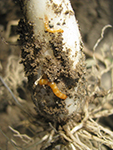 |
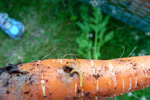 |
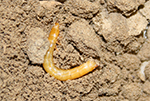 |
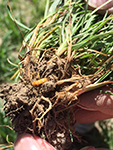 |
 |
| Wireworms feeding on an onion plant in a bunching onion (CFC = cepa fistulosum cross) seed crop. | Damage to a carrot root from wireworms. | A wireworm (click beetle larva). | A wireworm feeding on plant roots. | A click beetle of the species Agriotes obscurus, the larvae of which are wireworms. |
| Photo Source: Lindsey du Toit, Washington State University | Photo Source: Doug Young, Professor Emeritus of Washington State University | Photo Source: Oregon State University-Irrigated Agricultural Entomology Program (Silvia Rondon’s lab). | Photo Source: Oregon State University-Irrigated Agricultural Entomology Program (Silvia Rondon’s lab). | Photo source: Oregon State University – Oregon State Arthropod Collection. |
 |
 |
| A click beetle of the species Limonius californicus, the larvae of which are wireworms. | A click beetle of the species Limonius canus, the larvae of which are wireworms. |
| Photo Source: Oregon State University – Oregon State Arthropod Collection. | |
On-Line Resources:
Pacific NorthwestInsect Management Handbook: Vegetable crop pests – Wireworm.
Managing Wireworms in Vegetable Crops. Ontario Ministry of Agriculture and Food
Wireworms. VegEdge, University of Minnesota.
Wireworm Field Guide - A guide to the identification and control of wireworms, Syngenta Crop Protection Canada, Inc.
Wireworm Biology and Nonchemical Management in Potatoes in the Pacific Northwest, N. Andrews, M. Ambrosino, G. Fisher, and S.I. Rondon, Pacific Northwest Extension Publication no. PNW607
Weeds
Common name: Field dodder
Latin binomial: Cuscuta spp.
Host Crops: Bean, beet, carrot, onion, pepper, potato, tomato, and many other crops (not only vegetables). Dodder is a parasitic plant that feeds on many other plant species. Dodder cannot photosynthesize, but produces haustoria that penetrate the host plant to absorb water and nutrients. Small, white to cream flowers are produced.
Photos: Carrot and Pepper
On-Line Resources:
Pacific Northwest Plant Disease Management Handbook: Parasitic Plants of Oregon. Oregon State University Extension.
Pacific Northwest Weed Management Handbook. Chapter: Control of Problem Weeds, Section: Full chapter. pp 483–484, Oregon State University Extension.
https://www.ipm.ucdavis.edu/PMG/PESTNOTES/pn7496.html
https://www.colostate.edu/Dept/CoopExt/4DMG/Weed/dodder.htm
Common name: Yellow nutsedge
Latin binomial: Cyperus esculentus (Cyperaceae)
Plants affected: Any annual crop; the most seriously affected crops include onion and other plants with a light canopy and narrow range of herbicides available for use.
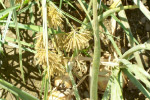 |
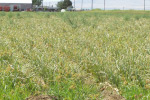 |
| Closeup view of a yellow nutsedge plant/flower. | Severe nutsedge infestation in an onion crop. |
On-Line Resources:
Yellow Nutsedge. Identification & Management of Emerging Vegetable Problems in the Pacific Northwest, Pacific Northwest Vegetable Extension Group.
Abiotic Problems Common to Vegetables
Common name: Air pollution or ozone injury
Cause: During very hot conditions in summer, combined with the presence
of excessive air particulate matter, e.g., from wildfires, symptoms of air
pollution and/or ozone injury have been observed in center-pivot irrigated crops
of various vegetables east of the Cascade Mountains in the Pacific Northwest
USA.
Host Crops: Various vegetables such as bean,
potato, and sweet corn.
Problem: Blossom end rot of vegetable fruit
Cause: Calcium deficiency resulting from various environmental conditions and management practices, e.g., inadequate Ca in the soil, inconsistent water as a result of alternating wet and dry periods that decrease Ca uptake by plants, and even excellent growing conditions such as a period of very bright sunshine and warm temperatures mid-season.
Crops affected: Tomato, pepper, eggplant, and various cucurbits.
On-Line Resources:
Blossom-end-rot on Tomatoes. By M. Ophardt, 2013. WSU Extension Garden Tips.
Blossom end rot: Understanding a perennial problem. Michigan State University Extension.
Blossom-End Rot of Tomato, Pepper, and Eggplant. By Miller, S.A., R. C. Rowe, and R. M. Riedel, The Ohio State University Extension Fact Sheet HYG-3117-96.
Blossom-end Rot of Tomatoes. Oregon State University Extension Service Bulletin FS 139. By I.C. MacSwan, 2000. Oregon State University Extension Service Bulletin.
Vegetables: Tomato: Blossom-end Rot. Washington State University Hortsense.
Problem: General nutrient deficiencies and toxicities
On-Line Resources:
Plant Nutrient Functions and Deficiency and Toxicity Symptoms. By Ann McCauley, Montana State University Extension. This article provides information on nutrient management issues.
Problem: Stem splitting in brassica crops
Crops affected: Any brassica crop grown for seed can develop stem splitting under conditions that promote very rapid spring growth (high soil moisture and warm temperatures)
On-Line Resources:
Problem: Edema
A physiological problem that is prominent when air is cooler than the soil, soil moisture is high, and relative humidity is high. The low plant transpiration rate combined with an increase in water absorption by roots from the soil leads to increased cell turgor pressure, resulting in eruption of epidermal cells as the inner cells enlarge. Protrusion of the inner cells causes epidermal cells to die and discolor, resulting in a ’warty’ appearance that can be misidentified as a disease. Symptoms are usually worse on lower leaf vs. upper leaf surfaces.
Host Crops: Numerous vegetables including brassicas, cucurbits, peas, spinach, tomato, etc. Vegetables with waxy leaves, e.g., brassicas, tend to be most susceptible.
On-Line Resources:
Cabbage and Cauliflower Brassica SP Oedema-Edema
Cabbage and Cauliflower Brassica SP Oedema-Edema
What are these bumps on my vegetables? Edema or oedema: It doesn’t matter how you spell it, it still doesn’t look good. What is it, what causes it and how can I prevent it? Michigan State University Extension
Problem: Vivipary (germination of seeds while still attached to the mother plant)
Crops affected: Solanaceaous vegetables like tomato and pepper.
On-Line Resources:
Effect of potassium nutrition during bell pepper seed development on vivipary and endogenous levels of abscisic acid (ABA).. By Marrush, M., M. Yamaguchi and M. E. Saltveit. 1998. J. Amer. Soc. Hort. Sci. 123(5):925–930.
Physiological and Nutrient Disorders. University of Kentucky Vegetable Integrated Pest Management Program. Vegetable Manuals.
Herbicide Injury
Problem: Herbicide injury to vegetables
Cause: Various kinds of herbicides can cause injury to different types of vegetable crops depending on the mode of action, use pattern, timing of application, rate of application, crop rotation, etc. Always follow label instructions to avoid herbicide injury to crops.
Crops affected: All vegetables are prone to some kind of herbicide injury if the herbicide products are not used according to label instructions or vegetable crops are not planted in accordance with label herbicide instructions.
On-Line Resources:
Herbicide Modes and Action and Symptoms on Plants, Richard Smith, Farm Advisor, University of California Cooperative Extension.
Herbicide-related injury to plant species, including vegetables (~1100 images), University of California Statewide IPM Program.
Herbicide Mode of Action and Injury Symptoms, University of Minnesota
Extension Service
Problem: Aminopyralid toxicity to vegetables from pre-plant compost application
Crops affected: bean, pea, pepper, tomato, spinach, etc. (almost any dicotyledonous plants)
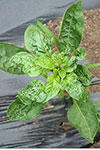 |
| Aminopyralid toxicity to pepper. |
On-Line Resources:
Aminopyralid Residues in Compost and other Organic Amendments. Washington State University Whatcom County Extension.
Herbicides in Compost, Washington State Department of Agriculture
Pesticide Management Division (PDF, 2010)
The Allowance of Green Waste in Organic Production Systems.
Organic Materials Review Institute.
Problem: 2,4-D herbicide injury
Crops affected: Most vegetables are susceptible to 2,4-D injury
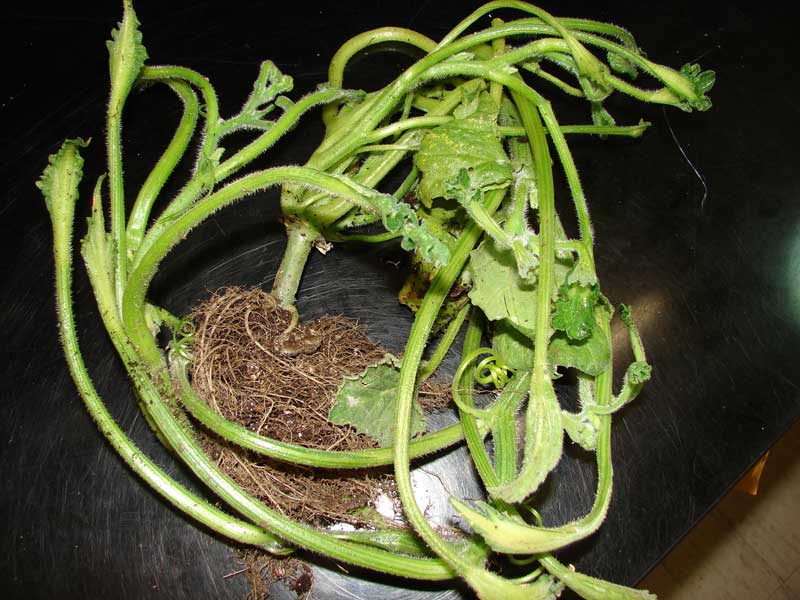 |
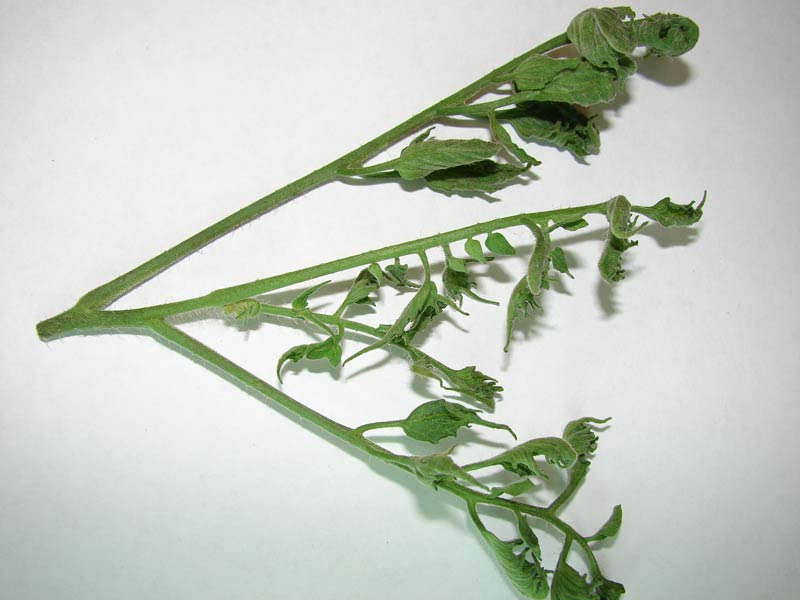 |
| 2,4-D injury on cucurbit. | 2,4-D injury on tomato. |
| Photo Source: Jenny Glass, WSU Puyallup PIDL | |
On-Line Resources:
Injury from 2,4-D. University of Illinois Extension Extension.
Herbicide Mode-Of-Action Summary. Cooperative Extension Service, Purdue University. See section I.A.1. Auxin Growth Regulators.
Herbicide Damage: 2,4-D and triclopyr. Hortsense, Washington State University. Click on Herbicide Damage, 2,4-D and triclopyr.
Vegetable Herbicide Damage. Colorado State University.
2,4-D Amine 4L injury symptoms on vegetables. University of Kentucky.
Our pages provide links to external sites for the convenience of users. WSU Extension does not manage these external sites, nor does Extension review, control, or take responsibility for the content of these sites. These external sites do not implicitly or explicitly represent official positions and policies of WSU Extension.

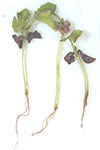
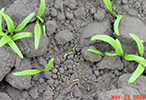
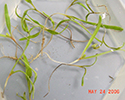
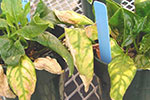
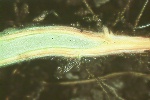
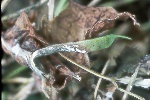
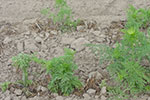
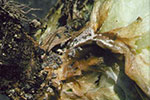
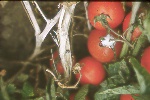
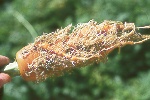
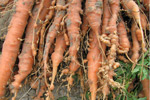
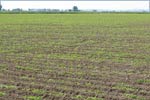
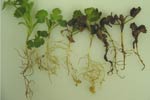
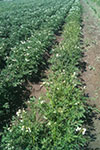
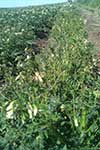
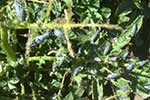
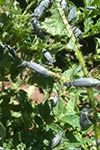
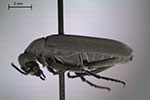
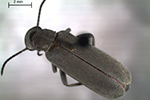
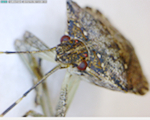
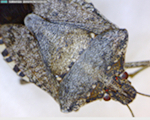
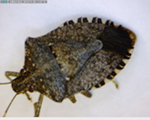
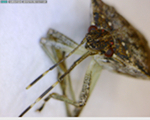
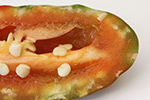
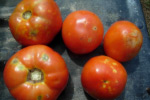
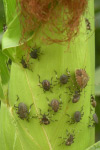
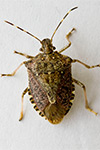
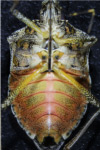
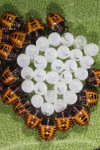
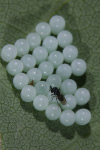
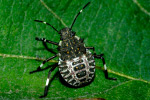
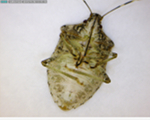
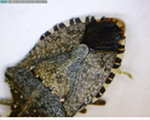
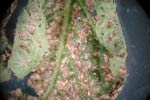
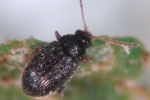
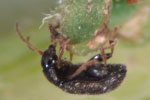
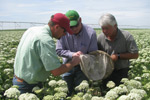
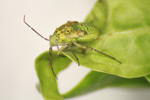
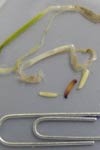
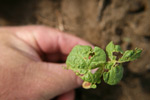
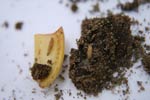
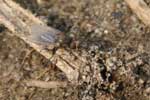
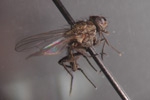
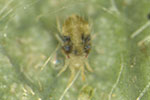
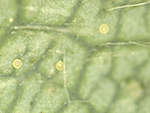
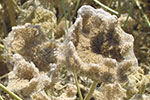
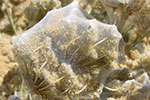
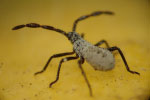
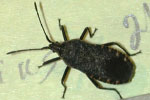
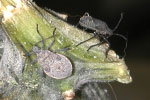
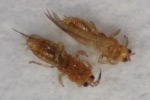
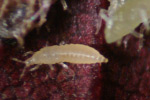
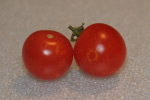
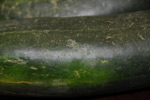
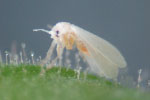
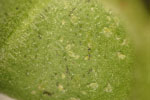
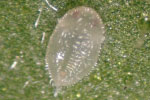
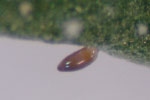
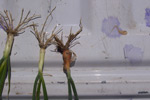
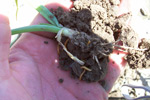
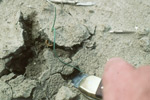
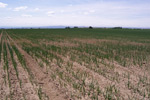
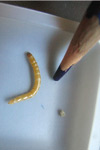
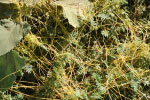
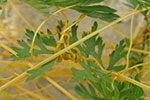
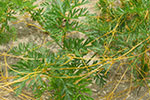
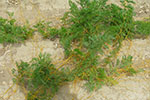
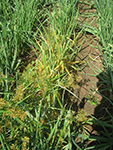
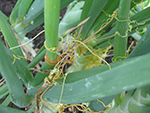
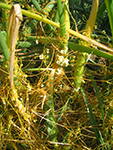
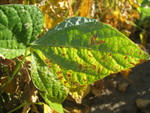
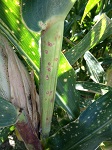
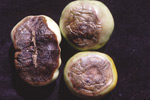
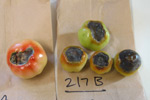
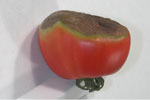
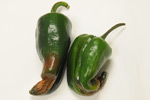
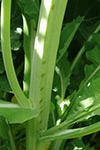
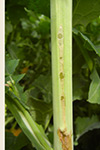
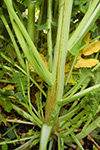
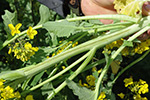
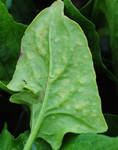
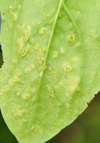
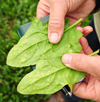
-thumb.jpg)
